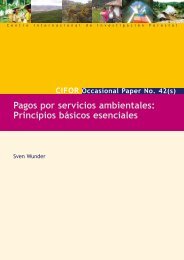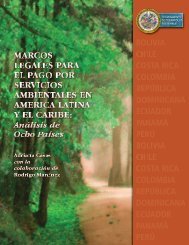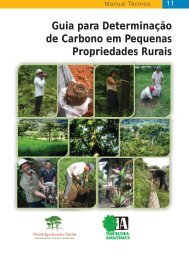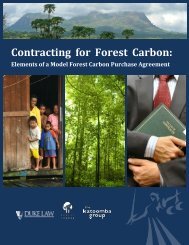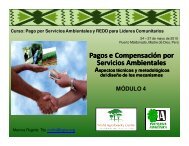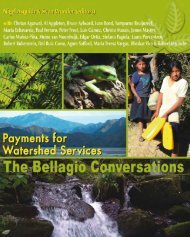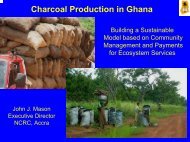Guide on Climate Change and Indigenous Peoples
Guide on Climate Change and Indigenous Peoples
Guide on Climate Change and Indigenous Peoples
- No tags were found...
Create successful ePaper yourself
Turn your PDF publications into a flip-book with our unique Google optimized e-Paper software.
3How are indigenous womenadapting to climate change?Just as indigenous women are <strong>on</strong>e of the most vulnerable to climatechange, they are also the most ready <strong>and</strong> are acting to cope with its impacts.• Use of specialized knowledge. During floods, women take theinitiative of looking for relocati<strong>on</strong>sites for their affected families <strong>and</strong>community members. Women alsoincreasingly share practices of usingalternative energy-related technologiessuch as solar, biogas, <strong>and</strong>improved cooking stoves. They alsouse less labor-intensive technologies,multiple cropping <strong>and</strong> intercroppingpractices, changing cultivati<strong>on</strong> toeasily marketable crop varieties orflood <strong>and</strong> drought resistant crops,<strong>and</strong> investing in alternative irrigati<strong>on</strong>facilities. 11• Organizing <strong>and</strong> training. <strong>Indigenous</strong>women are putting up selfhelporganizati<strong>on</strong>s <strong>and</strong> establishingnetworks <strong>and</strong> partnerships withother indigenous women’s groups.In additi<strong>on</strong>, they actively participatein trainings to enrich their skills inAfter the devastating effect ofHurricane Mitch in Nicaragua,indigenous women’sorganizati<strong>on</strong>s were able tomobilize their networks <strong>and</strong>partners for emergency relief<strong>and</strong> rehabilitati<strong>on</strong> directly tothe women <strong>and</strong> their familieswho need them most.Source: MADRE. “Women Resp<strong>on</strong>d to<strong>Climate</strong> <strong>Change</strong>.”In the Terai area of Nepal,before floods come, womentake their assets <strong>and</strong>livelihoods in higher places,sometimes, even theirlivestock. Those who haveenough resources increasethe plinth level of their housesor homestead to protect theirbel<strong>on</strong>gings from damage. Theyalso build community shelters.Women farmers also switch tocultivating crops that can beharvested before flood seas<strong>on</strong>.Others grow rice varieties thatsurvive above water whenthe floods come. Even theseedbed preparati<strong>on</strong>s <strong>and</strong>seed selecti<strong>on</strong> are altered 12 toensure crop survival.food <strong>and</strong> livestock producti<strong>on</strong>, thus enhancing their livelihood. At theirown initiatives, they seek professi<strong>on</strong>al support in order to increase theirknowledge <strong>and</strong> skills in combating climate change.• Reforestati<strong>on</strong>. Women are also inthe forefr<strong>on</strong>t of reforestati<strong>on</strong> initiatives.Every May 15, each pers<strong>on</strong> ina Batwa community in Africa plant100 trees <strong>and</strong> it is the women wh<strong>on</strong>urture these. 13 In the Bangladeshivillage of Kaijuri, although thewomen have the rights to the treessince they are the planters, they d<strong>on</strong>ot cut trees that are not intendedfor firewood. 14PART VII: <strong>Indigenous</strong> Women <strong>and</strong> <strong>Climate</strong> <strong>Change</strong> 113



